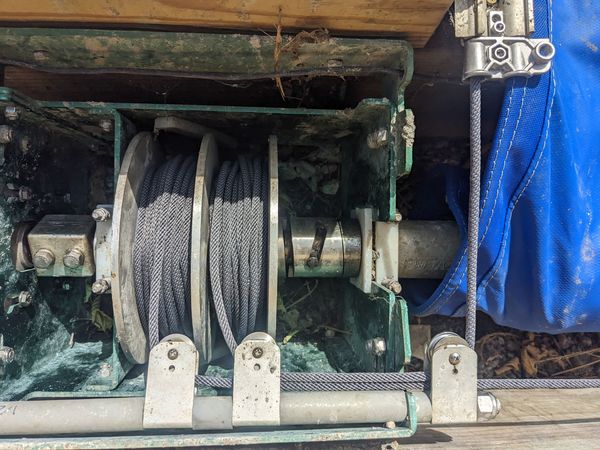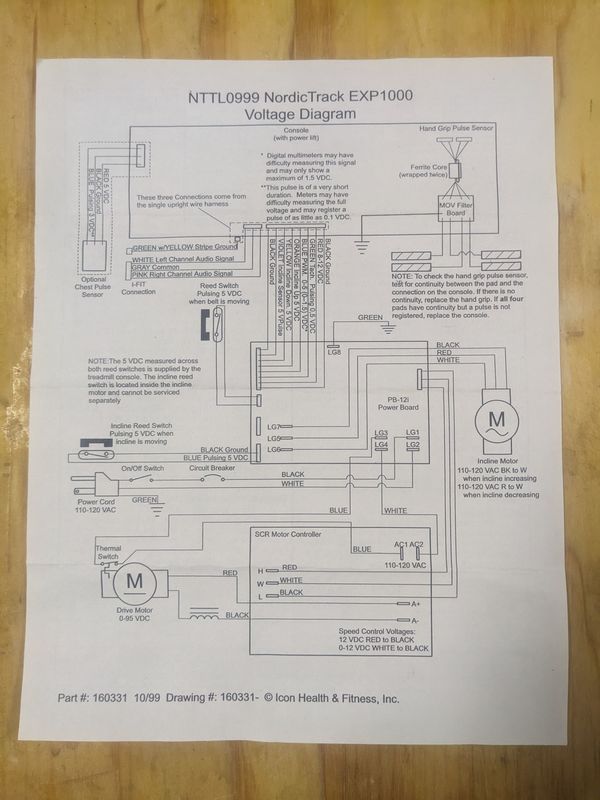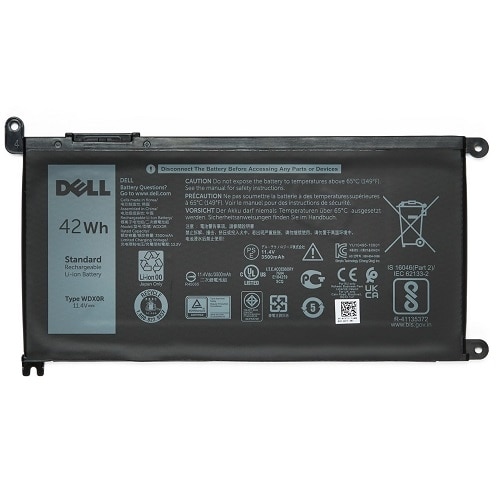Mostly not internet, and mostly just as shit as you make it
-
@e4tmyl33t said in Mostly not internet, and mostly just as shit as you make it:
Based on my father as evidence, no, it's the guns.
Possibly. My best actual guess is that it came about from running scrapers and dozers. I was running a scraper crew when I had my first back injury and everything about those machines is hard on your body.
Scrapers look like this:

That is actually two scrapers running in push-pull configuration. Here is a single machine running alone:

Here is a video of scrapers loading where you can sort of see how the tractor twists and rocks:
https://www.youtube.com/watch?v=i0ZIULj_H2o
But the important part is that running a scraper is a lot like rodeo riding for an entire work shift. There is no suspension at the wheels. Your seat has air suspension and there is a cushion hitch where the front tractor meets the rear bowl section to prevent oscillations from traveling forward. The entire front of the machine twists and rocks all over the place while you are on uneven ground like you have in the cut and the spread.
In addition, you have to disengage the cushion hitch when loading and unloading so during those periods of time you have part of your
 suspension
suspension  turned off. If you forget to turn it back on when you're done, well, let's just say that you won't make that mistake many times. If you hit a bump when the cushion hitch is only partially raised the jar that you get is even worse than if it were completely lowered.
turned off. If you forget to turn it back on when you're done, well, let's just say that you won't make that mistake many times. If you hit a bump when the cushion hitch is only partially raised the jar that you get is even worse than if it were completely lowered.With dozers, you are constantly moving your right shoulder and elbow. There is no steady state, it is constant motion. And if things go wrong, like say you take a dozer off of a gigantic stockpile (as I told the story of before) or you suddenly nose over or any other impact you brace yourself against the controls and all of that force goes through your shoulder.
-
Youtube suggested a video:
https://www.youtube.com/watch?v=jTibKYKYjOs
It is a scraper getting loaded by a push dozer and every single thing they are doing annoys me. I had to stop after ~4 minutes. The guy running that dozer.......I have fired guys who did all of the shit that he is doing. I am not going to go into all of it because I am pretty sure that most people wouldn't be interested but all he is doing is burning fuel and wasting time.
Also, that dozer is way too small to be pushing a scraper that large.
-
Here's a pretty good video of a scraper crew working:
https://www.youtube.com/watch?v=Kukt0v7noa8
Overall pretty good form. Nothing in there that I would nitpick.
As best I can tell there are ~40 scrapers on that crew. Each machine hauls ~44 cubic yards, but they're not doing a great job of getting a full load each round, let's call it an average of 40 yards.
So each round that they all make is ~1,600 cubic yards of material hauled. Which if I remember my estimating rules of thumb correctly that would be equal to one foot of dirt over 1 acre of land. Every time the entire crew makes a pass through that cut they are effectively lowering the elevation of 1 acre by 1 foot.
-
@Carnage said in Mostly not internet, and mostly just as shit as you make it:
Yeah, I've done similar a few times. I even once stuck my have in a running hay-blower (basically a ginormoua snowblower) and stopped myself just as it took some skin off a fingertip.
I'm blessed with a lot of dumb luck, paid for with inconsequential bad luck.I once put my hand into the accessory drive on a running engine and narrowly escaped my fingers getting pulled into the belt and through a pulley. I wasn't watching what I was doing as carefully as I should have (let's be real, I really should have just shut off the engine) and I honestly don't even know how I reacted and yanked my hand out. By all measures I should be nicknamed "Stumpy" now.
-
@Carnage said in Mostly not internet, and mostly just as shit as you make it:
a neighbor had a tractor was started with an explosive charge. I bet that also caused some boo-boos
You can see this in both versions of the movie 'Flight of the Phoenix' where it plays as a plot/suspense point. I have never heard of them being used on tractors, only on military equipment. But after WWII lots of military stuff got repurposed so it would make sense that an old tank engine or aircraft engine might have made its way into some farm machinery.
Back when my father was mining he had an ancient water pump with a gigantic diesel engine. I won't hazard a guess as to where the engine came from but the whole thing was fabricobbled together from loads of stuff and it pumped water into a pipeline that was big enough for me to crawl through as a child. That engine used an air start mechanism. There was a third set of lobes on the camshaft that actuated a set of valves and would use high pressure air to rotate the engine in place of an electric starter. Whichever cylinders were past top dead center the third lobe would open a valve to, pushing the piston down.
I have always been fascinated by mechanical systems like that and I remember when I was a kid they took the pump into the shop and rebuilt the engine and I spent at least a day examining the mechanisms that made it all work. It was all so simple in how it operated. If you're familiar with how hydraulic tappets work on a camshaft, this thing kind of worked in reverse of that. Once it reached a certain RPM there was a mechanism that was very similar to a governor that engaged and routed oil pressure to the tappets for the air start and collapsed them, disconnecting the air start valves.
It even had its own air compressor built in that would charge an air tank for the next start. Of course all of that leaked like a sieve so we almost always had to hook up an air source to it to start it if it was shut off for more than a few minutes.
Fun times.
Our pool cover also has a very interesting mechanism where if the motor rotates one direction it engages with the drum and retracts the cover and if it rotates the other it turns two pulleys that spool the rope that pulls the cover into place. It does it all with two sorts of one way clutches and the drive pin works a cam mechanism to move it back and forth to engage either the drum or pulleys. Pretty ingenious mechanism.
-
@Polygeekery said in Mostly not internet, and mostly just as shit as you make it:
Pretty ingenious mechanism.
...until it fails and you have to repair it

-
@Zerosquare the mechanism is ingenious. The design of the motor that runs it is another story entirely.
-
@Polygeekery yeah it looked old enough to be from the first world war. I can't find any information about it now but I think it was made in a series, possibly for military use?

-
@Carnage was it this?
From the sound of it that tractor had a mechanism that was like a cross between air start and a Coffman start. The cartridge worked directly on the piston instead of on a gear attached to the flywheel or crankshaft.
-
@Polygeekery said in Mostly not internet, and mostly just as shit as you make it:
@Carnage was it this?
From the sound of it that tractor had a mechanism that was like a cross between air start and a Coffman start. The cartridge worked directly on the piston instead of on a gear attached to the flywheel or crankshaft.
Might have been, it's been some 30 years since I saw it. Kid me just liked the idea of the explosion start.
-
@Carnage said in Mostly not internet, and mostly just as shit as you make it:
Kids me just liked the idea of the explosion start.

-
@Polygeekery said in Mostly not internet, and mostly just as shit as you make it:
Our pool cover also has a very interesting mechanism where if the motor rotates one direction it engages with the drum and retracts the cover and if it rotates the other it turns two pulleys that spool the rope that pulls the cover into place. It does it all with two sorts of one way clutches and the drive pin works a cam mechanism to move it back and forth to engage either the drum or pulleys. Pretty ingenious mechanism.
I think I can visualize it in part, but I'd love if you could post a video, or even just a couple of photos.
-
@Zecc I will see what I can do here in a bit.
-
@Zecc best I can do at the brightest part of the day:

In the cam slot you can see the drive pin. The drum on the right and the two pulleys on the left float on the shaft and so does the cam itself. The pin going through the cam runs through the only driven part of the shaft. Turn the motor one way and it cams over and drives the drum, spooling up the cover and opening the pool. Drive it the other way and it cams over and spools the rope which goes all the way down the tracks at each side of the pool and pulls the cover into place.
-
There is one thing that I wonder if the control electronics that I ripped out may have taken care of.
Induction motors will happily turn either direction once they are started. Now that I think about it, that may only be true of single-phase induction motors, but I honestly do not know for certain. For this PSC motor you control the direction of the motor by applying power to one start winding or the other which provides the "kick" one way or another to start the motor in the intended direction.
But, with a pool cover mechanism there is a certain amount of stretch in the cover and the ropes. When you cut power that stretch relieves itself and backdrives the mechanism, spinning the motor the opposite direction. So if you cut power, like when you get close to the end of travel on opening or closing the cover, and then try to give it a small bump to go a bit farther, it will actually run the motor the opposite direction as the stretch already has the motor turning the wrong direction. So if you stop it before it gets to the end and you want to go just a little bit farther you actually have to wait a couple of seconds until the motor is stopped and then go again.
Does that all make sense? I feel like I explained it poorly but I tried my best.
Think of the cover and ropes like a rubber band. The rubber band is connected to the shaft of the motor. You run the motor for a bit, tightening the rubber band and then turn off the motor. The rubber band then turns the motor backwards and while it is doing so you apply power to the motor again and the motor then starts and runs backwards. The rubber band has done what the start windings normally do and gotten the motor turning in the wrong direction, so it keeps running in that direction.
This also has the side effect that if you run the cover all the way closed and stall out the motor, once it stalls the stretch will then start the motor in the opposite direction and start opening the cover. So if you just flipped the switch and let it keep running it would, in theory, keep opening and closing the cover forever or until the motor burned up. In actuality if you open the cover too far it slips out of the track guides and when it went to close it again would probably start tearing the cover.
This makes me wonder if I should put a microcontroller on whatever relay control I build (currently I just have a SPDT center-off switch running the motor) and possibly sense the running current of the motor, shutting off the relay if it goes beyond a setpoint, and also introduce a delay on restarting the motor to allow it to come to a stop if you try to inch the cover closed or opened?
I also think that I found the reason why the reed switches are unreliable. The magnets that they give you to install in the cover are like really weak refrigerator magnets. I don't even know if they would hold a sheet of paper on a refrigerator. You can barely tell that they are magnetic. So is there a reason that they are so weak? Did they do that on purpose or are they just supplying cheap, shitty magnets to save a few cents on a $8,000 product that they probably have a profit margin of eleventy billion percent? I feel like me swapping out the magnets for something a lot stronger would be walking right into a Chesterton's Fence scenario. But in theory it should make the reed switches more reliable and prevent my wife from running the cover too far open and jamming the cover on the guides.
-
@Polygeekery said in Mostly not internet, and mostly just as shit as you make it:
There is one thing that I wonder if the control electronics that I ripped out may have taken care of.
Induction motors will happily turn either direction once they are started. Now that I think about it, that may only be true of single-phase induction motors, but I honestly do not know for certain. For this PSC motor you control the direction of the motor by applying power to one start winding or the other which provides the "kick" one way or another to start the motor in the intended direction.
But, with a pool cover mechanism there is a certain amount of stretch in the cover and the ropes. When you cut power that stretch relieves itself and backdrives the mechanism, spinning the motor the opposite direction. So if you cut power, like when you get close to the end of travel on opening or closing the cover, and then try to give it a small bump to go a bit farther, it will actually run the motor the opposite direction as the stretch already has the motor turning the wrong direction. So if you stop it before it gets to the end and you want to go just a little bit farther you actually have to wait a couple of seconds until the motor is stopped and then go again.
Does that all make sense? I feel like I explained it poorly but I tried my best.
Think of the cover and ropes like a rubber band. The rubber band is connected to the shaft of the motor. You run the motor for a bit, tightening the rubber band and then turn off the motor. The rubber band then turns the motor backwards and while it is doing so you apply power to the motor again and the motor then starts and runs backwards. The rubber band has done what the start windings normally do and gotten the motor turning in the wrong direction, so it keeps running in that direction.
This also has the side effect that if you run the cover all the way closed and stall out the motor, once it stalls the stretch will then start the motor in the opposite direction and start opening the cover. So if you just flipped the switch and let it keep running it would, in theory, keep opening and closing the cover forever or until the motor burned up. In actuality if you open the cover too far it slips out of the track guides and when it went to close it again would probably start tearing the cover.
This makes me wonder if I should put a microcontroller on whatever relay control I build (currently I just have a SPDT center-off switch running the motor) and possibly sense the running current of the motor, shutting off the relay if it goes beyond a setpoint, and also introduce a delay on restarting the motor to allow it to come to a stop if you try to inch the cover closed or opened?
I also think that I found the reason why the reed switches are unreliable. The magnets that they give you to install in the cover are like really weak refrigerator magnets. I don't even know if they would hold a sheet of paper on a refrigerator. You can barely tell that they are magnetic. So is there a reason that they are so weak? Did they do that on purpose or are they just supplying cheap, shitty magnets to save a few cents on a $8,000 product that they probably have a profit margin of eleventy billion percent? I feel like me swapping out the magnets for something a lot stronger would be walking right into a Chesterton's Fence scenario. But in theory it should make the reed switches more reliable and prevent my wife from running the cover too far open and jamming the cover on the guides.
Now that my vacation in your neck of the woods is over, feel free to burn the whole town down trying

-
@izzion said in Mostly not internet, and mostly just as shit as you make it:
Now that my vacation in your neck of the woods is over
The hell? I didn't even know you were in the area. We should have done lunch or something.
-
@Polygeekery said in Mostly not internet, and mostly just as shit as you make it:
I didn't even know you were in the area.
Why do you think he didn't tell you?

-
@Zerosquare fair.
-
@Polygeekery said in Mostly not internet, and mostly just as shit as you make it:
@izzion said in Mostly not internet, and mostly just as shit as you make it:
Now that my vacation in your neck of the woods is over
The hell? I didn't even know you were in the area. We should have done lunch or something.
It was a family gig, and I already double-dipped a work lunch into the trip down anyway

-
@izzion said in Mostly not internet, and mostly just as shit as you make it:
I already double-dipped a work lunch into the trip down anyway
To get them to pay for your trip? If so, good man. I used to plan "work stuff" to run parallel with our vacations in order to move the trip expenses into the "business deductions" column. Then I pissed off the IRS a few times and got away with it and decided that maybe that wasn't worth the risk if I get audited.
I didn't do anything that was explicitly against the rules. It should all be fine. But then again the IRS were the ones that took down Al Capone after every other law enforcement failed, so, yeah.
-
@Polygeekery said in Mostly not internet, and mostly just as shit as you make it:
@izzion said in Mostly not internet, and mostly just as shit as you make it:
I already double-dipped a work lunch into the trip down anyway
To get them to pay for your trip? If so, good man. I used to plan "work stuff" to run parallel with our vacations in order to move the trip expenses into the "business deductions" column. Then I pissed off the IRS a few times and got away with it and decided that maybe that wasn't worth the risk if I get audited.
I didn't do anything that was explicitly against the rules. It should all be fine. But then again the IRS were the ones that took down Al Capone after every other law enforcement failed, so, yeah.
Eh, it was more mundane than that. But I did manage to pin down a couple decision makers on an upcoming project proposal and we got all that sorted out, so it was worth, even without me trying to expense the milage.
-
@izzion said in Mostly not internet, and mostly just as shit as you make it:
expense the milage.
Even if you did not expense the mileage, you should be able to deduct the mileage expense.
-
@Polygeekery said in Mostly not internet, and mostly just as shit as you make it:
possibly sense the running current of the motor, shutting off the relay if it goes beyond a setpoint, and also introduce a delay on restarting the motor to allow it to come to a stop if you try to inch the cover closed or opened?
This is a Good Idea™ in general. You being
 makes it an even better idea.
makes it an even better idea.@Polygeekery said in Mostly not internet, and mostly just as shit as you make it:
You can barely tell that they are magnetic. So is there a reason that they are so weak? Did they do that on purpose or are they just supplying cheap, shitty magnets to save a few cents on a $8,000 product that they probably have a profit margin of eleventy billion percent? I feel like me swapping out the magnets for something a lot stronger would be walking right into a Chesterton's Fence scenario. But in theory it should make the reed switches more reliable and prevent my wife from running the cover too far open and jamming the cover on the guides.
Maybe they had the opposite problem (the sensors actuating too soon) and overcompensated?
I'd say it's worth a try. But then, I really shouldn't be offering advice on anything involving mechanics, so...

-
@Polygeekery said in Mostly not internet, and mostly just as shit as you make it:
To get them to pay for your trip?
My last company had offices in England where lots of us made semi-regular trips to (we also had an office in Russia that saw a fair bit of travel) and our boss told us to take a vacation then and use the 'free' flight.
-
@Zerosquare said in Mostly not internet, and mostly just as shit as you make it:
Maybe they had the opposite problem (the sensors actuating too soon) and overcompensated?
Perhaps, but you place the magnets where you want to in the cover, so you can adjust their position to wherever you want to. So I don't think it would be a matter of trying to adjust field strength to vary where the switch trips.
The cover replacement comes with lots of associated parts. Like replacement bearings and pulleys and stuff, and two magnets in case you have reed switches on both sides. Those magnets barely stick to each other.
If you look at this bracket:

You will see a screw boss on the right side of it. Those exist on both top and bottom of that bracket. That is where the reed switch threads into. So you can also adjust the clearance to the area where the magnet is inserted. For whatever reason, the reed switches do not have a jam nut or set screw to lock them into position. Seeing how when you thread the reed switch in you are likely to put some twist in the cable, and you thread it in on the bottom so gravity is also pulling on it, over time the switch would be likely to unthread itself some.
The magnets also have a stupid method to hold them into position. They have adhesive on one side just like you see on lots of magnets and you are supposed to remove the protective cover over the adhesive, slip it into the webbing you see under the sensor boss and the adhesive holds it into position. So I cannot imagine that they would hold their position long term, given that they are constantly subjected to water from the pool, rain, extreme heat and cold, etc.
It is just an entirely piss poor design, possibly designed to maximize the number of service calls.
There is also no way to install magnets to control the distance that the cover closes, so I assume that if you trigger the automatic close it just drives the motor until the current spikes. Which also seems like a good way to make sure that the motor eventually fails.
Oh, and the reed switches are NO variety. So if the wiring for them gets damaged there is a high likelihood that they would just silently fail and over spool the cover, jamming the mechanism. It seems like a NC variety would be better so that if mice chew the wires or whatever it wouldn't just keep opening until a current spike or it rips the ropes off the pulley.
-
@Polygeekery said in Mostly not internet, and mostly just as shit as you make it:
Induction motors will happily turn either direction once they are started. Now that I think about it, that may only be true of single-phase induction motors, but I honestly do not know for certain.
While it's true that single-phase induction motors will happily run in either direction once started, ones that aren't specifically designed to be reversible typically have starting windings that are designed to start them one way, and you'll have a heck of a time starting them in the other direction. 3-phase induction motors can be reversed by swapping any 2 of the 3 phases. They'll commonly have a diagram showing how to connect the phases if you want them to run CW or CCW.
-
@Zerosquare, I am starting to get well into the territory of "I don't know what I don't know" on this. Would you be okay with answering a few questions regarding design?
Just as a for instance, it is approximately 80' straight line distance from the place where the control switch is at by the house to where the wires run into a junction box at the pool cover. There are 8 tiny conductors running between them (22AWG? Possibly smaller?) As best I can tell the old controller circuit sent 24VAC over the center conductor and then when you turn the switch to open it connects to one conductor and if you turn it to close it connects to another.
If we go with 80' for the straight line distance, but that would lead straight through the pool and needs to go around it, let's call it 100', that would be 200' for the loop distance. Could I use DC instead? I have 24VAC transformers, so that wouldn't be a big issue. But DC signals would be much easier to work with for a microcontroller.
Looking at ampacity tables, for DC I should be safe at up to ~0.3A and I would not need anywhere near that for anything that I am doing for signals. Right? The table I found was from a company that makes eight conductor 22AWG alarm/security system cable, which if not the exact same thing I have should be substantially similar, no?
The old system has a key switch that actuates open and close, and if I am going to put a microcontroller in to handle logic and delays and such I would like to have some sort of failsafe if things go awry, so I may swap out that switch for a latching key switch that would actuate a primary relay or SSR or contactor that would control power before it goes into the relays for open and close. Turn the key switch on and it would (do something) and connect the mains power to the relays, then use a SPDT, center-off momentary switch to send signals to the microcontroller to control opening and closing. Are there any major pitfalls to look for in this design?
-
@Polygeekery said in Mostly not internet, and mostly just as shit as you make it:
@Zerosquare, I am starting to get well into the territory of "I don't know what I don't know" on this. Would you be okay with answering a few questions regarding design?
Sure. It's not quite the kind of stuff that I usually deal with, but I can try to help.
@Polygeekery said in Mostly not internet, and mostly just as shit as you make it:
If we go with 80' for the straight line distance, but that would lead straight through the pool and needs to go around it, let's call it 100', that would be 200' for the loop distance. Could I use DC instead? I have 24VAC transformers, so that wouldn't be a big issue. But DC signals would be much easier to work with for a microcontroller.
No problems with DC. But I'd suggest using a current loop instead of something voltage-based, as it is less sensitive to interference and to cable length. You don't need much current (let's say 10 mA or so), so 22AWG wire is fine.
Also, I'd definitely recommend protection against voltage transients and optical isolation ; connecting such a long cable directly to a microcontroller input would be really tempting fate indoors, and outdoors is even worse (lightning strikes, etc.)
All of this is pretty standard stuff, so there's no need to reinvent the wheel ; there are probably plenty of Arduino shields (or interface boxes, if you want something a bit more robust) on the market that would be suitable.
@Polygeekery said in Mostly not internet, and mostly just as shit as you make it:
The old system has a key switch that actuates open and close, and if I am going to put a microcontroller in to handle logic and delays and such I would like to have some sort of failsafe if things go awry, so I may swap out that switch for a latching key switch that would actuate a primary relay or SSR or contactor that would control power before it goes into the relays for open and close. Turn the key switch on and it would (do something) and connect the mains power to the relays, then use a SPDT, center-off momentary switch to send signals to the microcontroller to control opening and closing. Are there any major pitfalls to look for in this design?
At first glance, it looks like a reasonable solution to me, but I don't have real experience in electrical systems safety, so take my advice with a grain of salt.
-
@Zerosquare said in Mostly not internet, and mostly just as shit as you make it:
I don't have real experience in electrical systems safety, so take my advice with a grain of salt.
Advice is worth what you pay for it. That being said I am happy to accept any advice you give with the caveat that if anything goes up in flames or I electrocute myself or others the liability is my own. No worries there.
-
@Polygeekery said in Mostly not internet, and mostly just as shit as you make it:
if anything goes up in flames
That's what I meant to do. Really!
-
@Polygeekery Thanks.
In my mind I pictured the pin acting as a moving pawl to two opposing ratchets each driving some kind of spring-loaded clutch, or whatever.
This is a lot more elegantly simple than I thought.
-
@Zecc said in Mostly not internet, and mostly just as shit as you make it:
This is a lot more elegantly simple than I thought.
Yeah. It's a really cool mechanism, if you're into that sort of thing. My pool guy gave me "the look" when I geeked out on it a little. As a person who tends to overcomplicate things I really like super simple mechanisms that do unexpectedly complex things.
Hell, I can't do shit without a microcontroller. If your only tool is a hammer, something something.
-
@Zerosquare said in Mostly not internet, and mostly just as shit as you make it:
But I'd suggest using a current loop instead of something voltage-based, as it is less sensitive to interference and to cable length. You don't need much current (let's say 10 mA or so), so 22AWG wire is fine.
Do you have any articles to suggest on the subject? I am not familiar with how this is done.
@Zerosquare said in Mostly not internet, and mostly just as shit as you make it:
Also, I'd definitely recommend protection against voltage transients and optical isolation ; connecting such a long cable directly to a microcontroller input would be really tempting fate indoors, and outdoors is even worse (lightning strikes, etc.)
Sure, but if lightning were to strike the cables or whatever I don't think I could ever put enough isolation in to prevent everything getting fried. That sort of voltage has already arced across a few miles of atmosphere, would even an inch of isolation gap in a circuit board do anything?
@Zerosquare said in Mostly not internet, and mostly just as shit as you make it:
All of this is pretty standard stuff, so there's no need to reinvent the wheel ; there are probably plenty of Arduino shields (or interface boxes, if you want something a bit more robust) on the market that would be suitable.
For the relays, or the inputs, or both? I don't think I've ever seen an Arduino shield that has the ability to switch 15A? But if there is some shield or interface box that would provide the current loops and optical isolation and all of that for the control side of things I am all for it. No sense reinventing the wheel. I am all for "man Legos" when I make things.
Although, for a microcontroller I was leaning more towards a NodeMCU or D1 Mini or something similar. If I could accurately and reliably sense the cover opening and closing I could use that to trigger and automate other things. As a for instance, at some point I want to see if I can find some reasonably priced 2" valves to control the pump intake flow. When the cover is closed it would be ideal to turn off the skimmers and run all flow through the main drain in the deep end as the skimmers really aren't doing anything and more flow in the main drain would clean the floor better. When the cover is open for a few hours it would be advantageous to shut off the main drain and only use the skimmers to remove the bugs and leaves that fall in while we are swimming. But it also isn't worth the trouble to go change the valves manually, plus I have a shitty memory and am generally lazy so I would be unlikely to remember to move everything back at the end of the night.
We have also left the pool light on several times while the cover is closed which just wastes energy and bulb life. It would be nice to be able to send a MQTT message and shut off the pool light when the cover is closed. That could be done regardless. Just send the message anytime the close relay is triggered.
Speaking of pool lights, they are powered by a 12V 30A power supply in order to not have an AC source submerged in the pool. But now that those bulbs are LED and not incandescent I have to assume that there is some sort of power supply integrated into the bulb, I assume a current-limiting boost converter, and that seems like it would be reintroducing a shock hazard, no?
-
@Polygeekery said in Mostly not internet, and mostly just as shit as you make it:
Do you have any articles to suggest on the subject? I am not familiar with how this is done.
I have been trying to find one, and of course, I absolutely can't find one clearly explaining the concept, nor an example of a commercial interface that does it. Yet I'm sure they exist. I must be using the wrong search terms, or Google sucks worse than usual. I'll try again later, and if I can't find it, I'll write the damn thing myself. Don't hesitate to ping me if I forget.
@Polygeekery said in Mostly not internet, and mostly just as shit as you make it:
Sure, but if lightning were to strike the cables or whatever I don't think I could ever put enough isolation in to prevent everything getting fried. That sort of voltage has already arced across a few miles of atmosphere, would even an inch of isolation gap in a circuit board do anything?
A direct lightning strike will absolutely turn everything into a pile of charred debris, and there isn't much you can do. There's just too much energy to protect against it.
But it doesn't take that much energy to damage a microcontroller input, and a 200' cable can act like a freaking huge antenna, so even distant lightning strikes (and other ESD-generating stuff) can cause if you don't include protections.
The point of an isolated current loop is that:
- it's inherently pretty robust
- at worst, the isolator blows up, but your microcontroller and everything downstream is undamaged
@Polygeekery said in Mostly not internet, and mostly just as shit as you make it:
For the relays, or the inputs, or both? I don't think I've ever seen an Arduino shield that has the ability to switch 15A? But if there is some shield or interface box that would provide the current loops and optical isolation and all of that for the control side of things I am all for it. No sense reinventing the wheel. I am all for "man Legos" when I make things.
Both. Even if there were an Arduino shield claiming to be able to switch 15 A, I wouldn't trust it. It's better to use an external SSR or anything else that's properly designed to switch high power.
@Polygeekery said in Mostly not internet, and mostly just as shit as you make it:
But now that those bulbs are LED and not incandescent I have to assume that there is some sort of power supply integrated into the bulb, I assume a current-limiting boost converter, and that seems like it would be reintroducing a shock hazard, no?
Good question. If those bulbs are made specifically to be used for pools, my understanding is that the manufacturer is supposed to have taken protective measures to make sure that doesn't happen, even if the bulb is faulty. Otherwise...

-
Now that I think about it, the input isolation could be done with relays as well. Sure, they're bigger than optoisolators and have moving parts, but in your case it wouldn't matter much. And since they're electromechanical, they tend to be more tolerant of abuse.
Remind me to draw a schematic.
-
-
Wrong kind of CRS. That one makes you violent and causes poor judgement

-
@Zerosquare said in Mostly not internet, and mostly just as shit as you make it:
Wrong kind of CRS. That one makes you violent and causes poor judgement

No, that's the same one. Or at very least they both have those symptoms.
-
I posted today about how I brought home a couple of treadmills to harvest the motor from. Tonight the guy who takes all of my scrap metal (and surprisingly doesn't seem to have a meth addiction) comes by and as we are loading shit into his truck I see something tucked in the back of a cover.

Good on you NordicTrack. I should be able to reuse all of the control electronics. In theory. We will see.
If you need a variable speed ~1.5HP DC motor for something, try to find a 25 year old NordicTrack. Somewhere in there you should find a fairly complete circuit diagram to work with. It should save you from some reverse engineering or purchasing a fairly large variable voltage power supply.
-
My kids had Leapfrog devices when they were very young. For anyone not familiar they are electronic game devices with an educational angle to them. They teach math and spelling and other stuff through games.
Over the weekend we were going through some boxes remaining from the move and found a box with their Leapfrog Rock-It (I think that's the name of it, they're pretty cool) and started playing with them again. But only one of them would hold a charge.
I take the other one apart. Nice and simple. No security screws, just standard 2.5mm female hex screws. I open it up and inside there are just standard NiMh AA rechargeable batteries in a standard AA socket. They're not even soldered or spot welded in place. Pop then out and put in some new rechargeables and it is good to go.
Good on you Leapfrog for making it easier serviceable and repairable with commonly available components. It was a breath of fresh air compared to the usual situation where every single device has its own unique Li-ion batteries that do not interchange with anything else and by the time you need one it is no longer available OEM and only available from shady third-party sources and lasts a fraction as long as the original. I'm looking at you Dell. If your Dell laptop is more than a year old there's a good chance the only battery you will be able to find will be from a company with a name that sounds like they should be selling Chinese takeout and not batteries.
-
@Polygeekery said in Mostly not internet, and mostly just as shit as you make it:
the usual situation where every single device has its own unique Li-ion batteries that do not interchange with anything else and by the time you need one it is no longer available OEM and only available from shady third-party sources
Sometimes it's hard to tell the shady third-party sources apart from the OEM's suppliers.
-
@dkf said in Mostly not internet, and mostly just as shit as you make it:
Sometimes it's hard to tell the shady third-party sources apart from the OEM's suppliers.
I remember some source mentioning that it seemed to them that the shady third-party suppliers were taking failed batteries (which usually only have one cell in the pack that is currently failed), disassembling them to salvage the still technically not dead parts and combine them into
 working
working  batteries that they then sell. So in that respect it can be very hard to tell the difference as all of the components will be the same but the third-party option will be made from components that already have 80%+ of their useful life used up.
batteries that they then sell. So in that respect it can be very hard to tell the difference as all of the components will be the same but the third-party option will be made from components that already have 80%+ of their useful life used up.Some of these are what you are likely referring to. You can look on Amazon for "Dell WDX0R battery" and see lots of listings that look like genuine OEM parts but they definitely are not.

They are all over Amazon for between $30-$50. Retail from Dell is in the $90-$125 range depending on if they are on sale at the moment:
IMHO, they are fairly overpriced when buying OEM but when you compare the quality and lifespan with the third-party options they are worth the money in comparison. You can get another year or two out of an OEM Dell battery where the third-party options have significantly less battery life out of the box and will you will be lucky if they last 6 months before the battery is entirely dead.
If you're going to replace a laptop battery either buy OEM or don't even bother cracking the case open.
-
@Polygeekery When the battery of my laptop was broken last year, I bought a non-Dell product at € 27.66 - far less than the Dell original equipment price. And it still works.
-
@Polygeekery said in Mostly not internet, and mostly just as shit as you make it:
Good on you Leapfrog for making it easier serviceable and repairable with commonly available components.
I'm sure that's the explanation. Definitely not LeapFrog saving a buck or two by using an inferior-but-cheaper battery technology in a product whose market is very price-driven.

-
@Zerosquare if that was the case, then first that's still a good thing, and second it clearly isn't a universal rule.
I bought a couple of years ago an electric mosquito zapper (*) with a rechargeable battery. The battery held for about a couple of years, which I thought was reasonably good given how cheap the whole thing is. But when I took it apart to see if I could change it, I was saddened to see it's a custom (?) one, with absolutely nothing written on it, which is soldered on the wires. So not only I can't change it easily, I also have no idea with what I'd be supposed to change it. I would very much have preferred if they had been using a standard battery pack (which would definitely have fitted easily).
I could take the battery pack itself apart to see if the cells have any more indications, or assume based on the shape factor that they must be 2 AAA batteries (what's the worse that could happen?). But given how cheap the whole thing is, it's easier to just chuck it out and buy a new one, which is what I did.
(*) something like this -- amusingly this is the very top result of my search and it looks to be the exact model I now have!

-
@Zerosquare said in Mostly not internet, and mostly just as shit as you make it:
@Polygeekery said in Mostly not internet, and mostly just as shit as you make it:
Good on you Leapfrog for making it easier serviceable and repairable with commonly available components.
I'm sure that's the explanation. Definitely not LeapFrog
saving a buck or two by using an inferior-but-cheaperusing a safer battery technology in a product whose market isvery price-driven.extremely safety conscious and one battery fire that injured a child would bankrupt you.
NiMh batteries are super safe and besides that it lasts for hours on a charge as it is.
-
You'd think so, but Nintendo DS had a lithium-based battery inside, and it was popular with kids.
I mean, it would be nice if LeapFrog did indeed consider safety and repairability. But even if they did, I don't believe that's the #1 explanation. Toys manufacturers do all kinds of optimizations* to cut manufacturing costs down to the minimum. And using nickel-based batteries instead of lithium-based ones is a significant cost saving.
Kinda like commercial software using open-source components is generally not because the company truly cares about open-source.
(* such as, for example, using bottom-of-the-barrel-grade flash memory to store the sounds effects. Because on a $29.99 toy, it doesn't really matter if a bit-flip causes a random click in the audio three year down the line.)
-
@Zerosquare sure. But you also have to consider "good enough". The battery life is already good enough with cheaper and more stable batteries so why would you put in Li-ion batteries that are more temperamental.
FWIW, Leapfrog really does seem to care about their customers and products.
-
Amazon apparently has a new Echo car device.
This is one of the photos on the product page.
If I wanted Alexa in my car why would I get this extra device that needs the Alexa app on my phone when I could just use the Alexa app on my phone? Who the fuck is buying this?
 Coffman engine starter - Wikipedia
Coffman engine starter - Wikipedia


